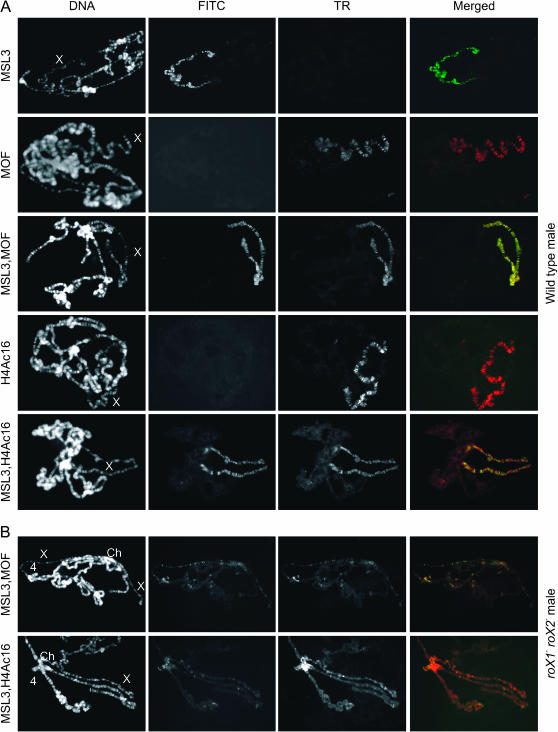Figure 1.—
H4Ac16 and MSL colocalize on polytene chromosomes from wild-type and roX1− roX2− males. Chromosome preparations from wild-type and roX1ex6 roX2− male larvae were probed with antibodies against MSL3, MOF, and H4Ac16. Patterns of ectopic MSL localization are similar in roX1ex6 roX2− and roX1SMC17A roX2− male larvae, but the salivary glands of roX1ex6 roX2− produce better polytene chromosomes for immunostaining. (A) Wild-type males. (B) roX1ex6 roX2− males. DNA is detected by Hoechst 33258. MSL3 is detected by FITC. MOF and H4AcK16 are detected by Texas Red (TR). An exposure of 40 msec was used for DNA; a 1-sec exposure was used for TR and FITC in wild-type males. Exposure times were lengthened to 4 sec (TR) and 3 sec (FITC) in roX mutants. Exposure for the Texas Red channel of row 1 and the FITC channel of rows 2 and 4 in A was longer to demonstrate the absence of cross-reactivity by the secondary antibodies used. X chromosome (X); fourth chromosome (4); chromocenter (Ch).

